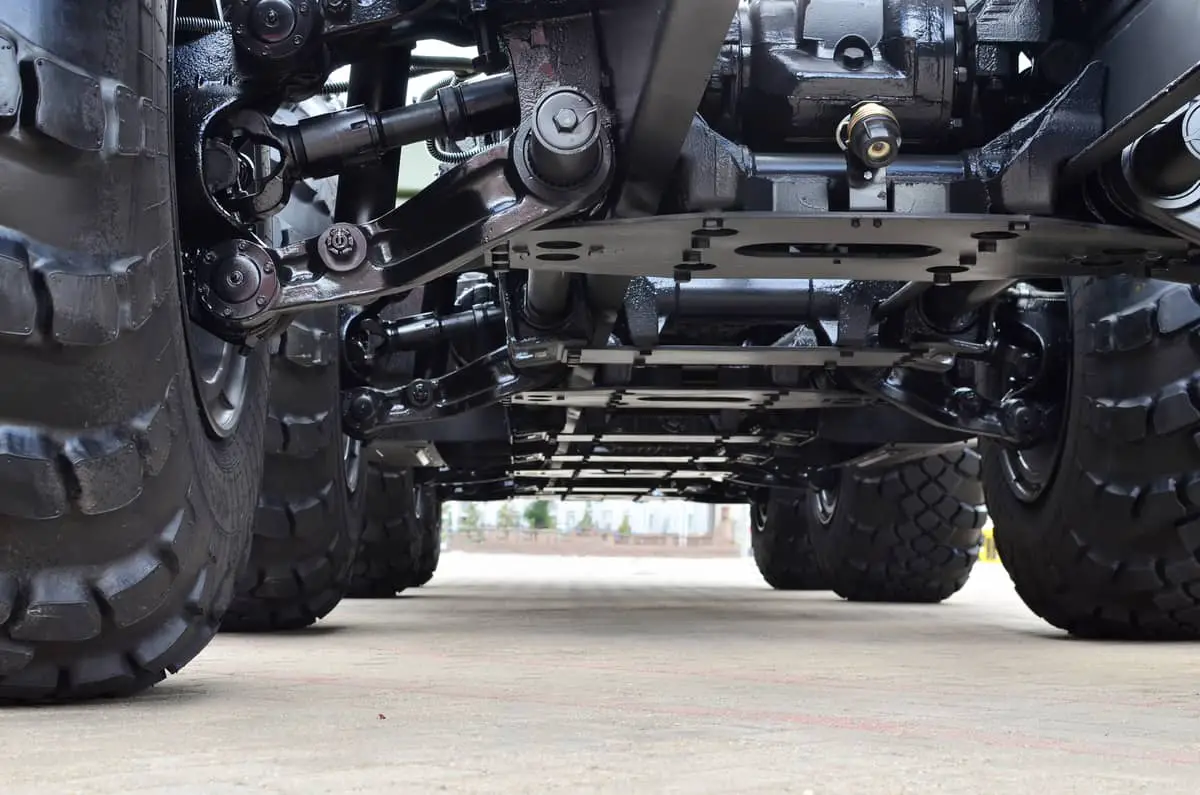When it comes to the suspension on your RAM 1500, there are a lot of different terms that can be confusing, such as struts and shocks. It is very important to know what kind of suspension your truck has and how to maintain it properly.
Each manufacturer has different practices of suspending their pickup trucks. In regards to the RAM 1500, it will typically have struts over shocks. While this is common in most trucks, you should keep in mine that based on the make and model of your truck, it could be different.
Stay with us to know more about shocks and struts and how they can improve your driving experience. I’ll also show you how to maintain them so they continue functioning effectively for a long time.

What Are Shocks?
In addition to helping make the ride more comfortable, shocks also play an important role in maintaining tire contact with the road. This helps to improve traction and braking, and it increases overall safety.
Shocks are components designed to dampen the force of bumps and jolts as you’re driving. They work by using hydraulic fluid to resist the motion of the spring and control the amount of rebound.
This helps keep your truck from bouncing around too much as you’re driving, giving you a smooth ride.
What Are Struts?
Although they are often overlooked, struts are essential to a car’s suspension system and vital in ensuring a safe and comfortable ride. This is especially important when driving on uneven roads or going over bumps.
Struts are an essential component of a car’s suspension system. They mainly have a coil spring assembly, which helps support the vehicle’s weight when riding bumps.
In addition, struts also help improve a car’s handling by keeping the tires in contact with the ground. As a result, they play a critical role in ensuring a smooth and enjoyable ride.
How Do I Know if My RAM 1500 Has Shocks or Struts?
There are a few ways to tell if your RAM 1500 has shocks or struts. One way is to look at the design of the suspension system. Shocks typically have a gas or liquid-filled piston, while struts have a coil spring assembly.
Additionally, struts tend to be larger in diameter than shocks. This is because of the inclusion of the coil spring, which allows them to support the vehicle’s weight better.
If you’re still unsure, the best way to know is to consult your car’s owner’s manual or ask a qualified mechanic.
When Do I Replace Them?
You should replace your car’s shocks or struts every 50,000 miles (80467 kilometers). However, you may need to do this a bit sooner if you regularly make trips on rough terrain.
If you frequently drive on rough roads or carry heavy loads, you may need to replace them sooner. It would help if you also had them checked regularly for leaks, as this can cause problems down the road.
Please don’t wait too long to replace them, as worn-out shocks can cause premature tire wear and other problems.
Many factors can affect the lifespan of your shocks or struts, such as:
- Driving habits
- Terrain
- Weather conditions
If you notice that your car is bouncier than usual or starting to bottom out when going over bumps, it’s probably time to get new shocks or struts.
Ultimately, it’s important to consult with a qualified mechanic to get the best advice for your particular car. With a little care and attention, you can keep your car running smoothly for many years.
How Does Your Suspension Affect Driveability?
Your suspension affects driveability since it is responsible for keeping your car up off the ground and maintaining the correct interface between your tires and the road. Without a properly functioning suspension, your car would be more difficult to drive.
There are different suspension systems (independent, semi-independent, or live axle), but they all work to keep your car “suspended” – not bouncing around on the ground.
It Soaks the Bumps on the Road
A well-designed suspension will soak up bumps in the road, providing a smooth ride for passengers and keeping your tires in thorough contact with the ground for good traction and braking.
A poorly designed suspension can lead to:
- A bumpy ride
- Poor traction
- Increased wear and tear on tires and other components.
So if you’re experiencing a rough ride or your car seems to be bouncing a lot, it might be time to have your suspension system checked.
Having a good suspension is even more important if you’re regularly driving on rough roads or off-road. Without it, your truck could easily become damaged or stuck.
It Supports the Vehicle’s Weight
A vehicle’s suspension system is responsible for supporting the weight of the vehicle and providing a comfortable ride. The suspension system consists of a series of springs and shock absorbers that work together to absorb impact and keep the vehicle level.
When a suspension system is working properly, it helps to improve handling, traction, and stability. However, when it is not working correctly, it can cause the vehicle to bounce or sag and make it difficult to control.
It Dampens the Road Irregularities
When driving on a bumpy road, you may notice that your car feels smoother if it has a good suspension system. That’s because suspension helps to dampen the effects of road irregularities, making for a smoother ride.
In addition, suspension can help to improve handling by reducing body roll. As a result, cars with suspensions typically provide a more comfortable and enjoyable driving experience.
It Enhances Stability and Handling
A car’s suspension system is important for several reasons. Most importantly, it helps keep the wheels in contact with the ground. This is important for both stability and handling.
A well-tuned suspension system will also help absorb shocks from bumps in the road, making for a smoother ride. In addition, a suspension system can also improve fuel economy by reducing aerodynamic drag.
As a result, a properly functioning suspension system is essential for any vehicle.

Conclusion
Now that you know whether your RAM 1500 has shocks or struts, it is important to learn how to maintain them properly. Check your owner’s manual for specific maintenance requirements, but you should generally have the suspension system checked at least once a year.
